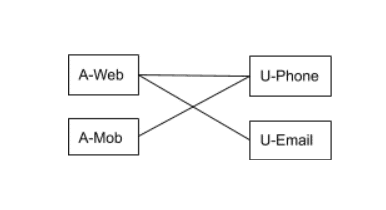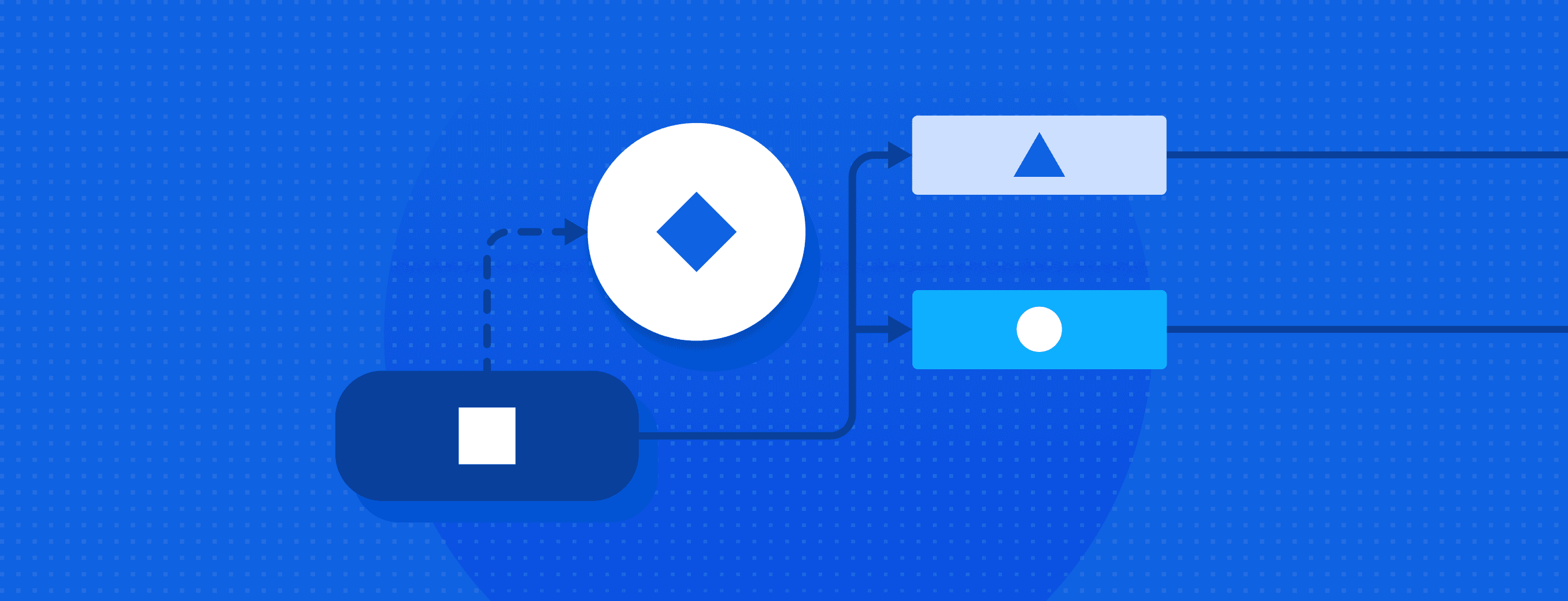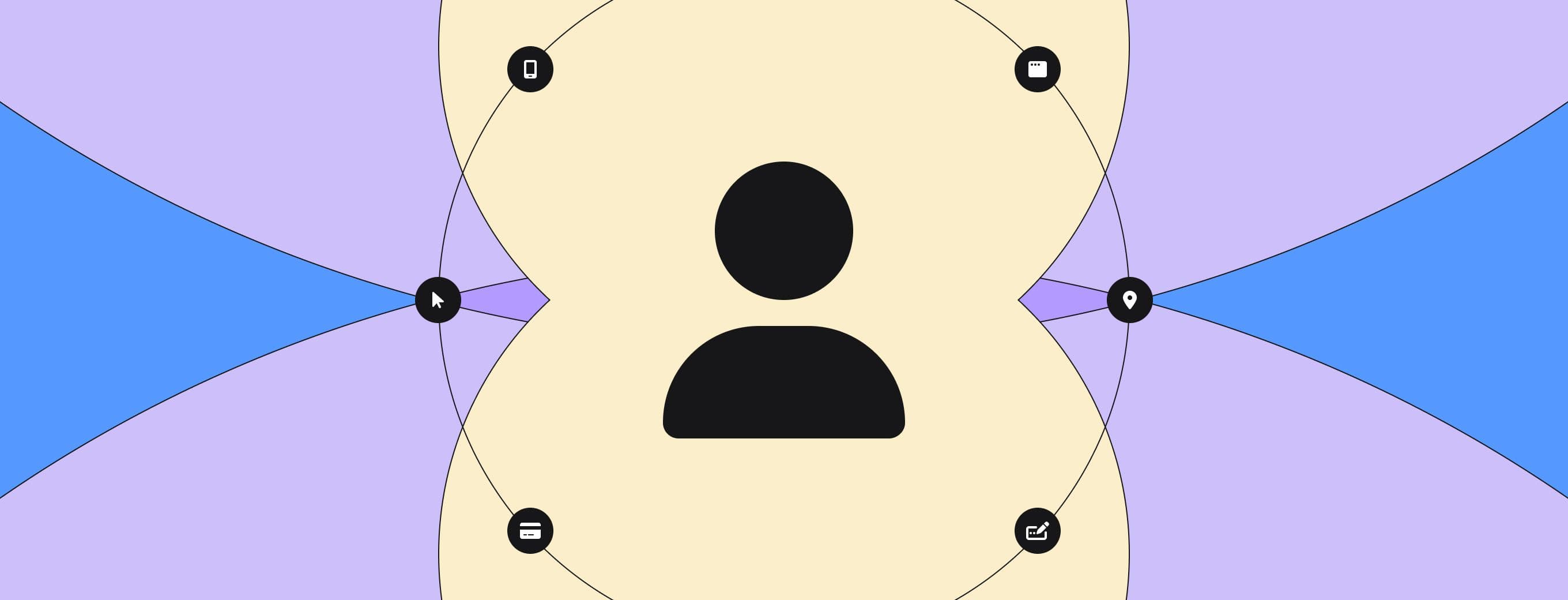The Tale of Identity Graph and Identity Resolution

In our previous article on Game Analytics for Mobile, we showed how to build an open-source analytics solution using RudderStack. As highlighted in the article, understanding users is crucial to every analysis. Hence, it is essential to tie the events or activities to the individual users generating those events. Analytics platforms help collect this data. Unfortunately, this is not trivial in the world where users often browse anonymously or use multiple identities (e.g., email, phone) with the same product or access from different devices and channels. The problem of ID resolution is to be able to tie these different identities together whenever possible in a privacy-preserving way. An identity graph helps to understand these relationships better.
This blog is a part of a two-part series on this topic. The first part describes the problem, while the second part describes possible approaches to solve it.
A Real-Life Scenario
To motivate the problem further, consider a sample journey of a user on an eCommerce platform.
- The user comes to the website on this laptop, browses certain products anonymously, and drops off without making a purchase.
- He installs the eCommerce application on his mobile device, logs in by providing his phone number but leaves without making a purchase.
- The user comes back to the website and makes a purchase. During this checkout process, he registers with his email and provides his phone number to receive notifications.
Different User Identifiers
Let’s say the eCommerce platform is using a CDP such as RudderStack to collect all the user activity data. Also, the eCommerce platform uses RudderStack to dump this data into a warehouse, such as Snowflake. Every event is associated with a user identifier. The user identifier could either be explicitly set by the application or auto-assigned by RudderStack or both. For example, in the above event sequence, the following identifiers will be used:
- Step 1: Since the user hasn’t provided any user identifier, RudderStack will associate an anonymousID. Let’s say A-Web: A stands for anonymous. After this, RudderStack will save this ID as a cookie. All events will be associated with the A-Web. RudderStack will dump the events in the data warehouse with A-Web as the user ID.
- Step 2: Similar to the above, RudderStack will create an ID on the mobile device. Let’s call it A-Mob and save it in local storage. All events before the user signing up will be associated with A-Mob. Once the user logs in with his phone number (U-Phone), we will be able to associate the two identifiers. We will know that the ID A-Mob and the phone number U-Phone belong to the same user entity.
Note: RudderStack doesn’t automatically capture the phone – the eCommerce application would have to explicitly set it via the identify() call and pass the ID U-Phone. The identify() call forms an association between the two IDs, U-Phone and A-Mobile. RudderStack can, in turn, save this association into the data warehouse.
- Step 3: Similar to Step 2, RudderStack will associate the events with the automatically assigned ID A-Web. Later, when the user provides the email (U-Email) and phone number (U-Phone), RudderStack will associate those with the ID A-Web using the identify() call.
The Identity Graph
The following diagram captures the association formed by the above IDs. The identify() call creates the edge in a graph, as explained earlier. The diagram indicates that these two IDs are known to be associated with the same end-user. The nodes represent identities, while the edges represent associations between IDs. For example, we know that anonymousID assigned by RudderStack (A-Web) and the user email address (U-Email) are the same when the user logs in with his email.

Identity graph at the end of steps 1-3.
One should be able to associate all the web events (collected in steps 1 and 3) and the mobile events (collected in step 2) as originating from the single end-user. One way to achieve that is to create a mapping between all these individual IDs (A-Web, A-Mob, U-Phone, and U-Email) into a single virtual user ID. You can associate all the events with this virtual user ID. You can do this by doing a JOIN between the event table (which has the individual IDs) and the ID to the virtual ID mapping table.
The Identity Graph is not Static
This identity association can evolve over time. Let’s say the user comes to the same eCommerce site on a third device – his office desktop. If he does not sync the cookies between his laptop and office desktop, the system will associate the third ID with him. Let us call this third ID A-Web2.

Identity Association with A-Web2
At this point, we don’t know if this ID (A-Web2) is associated with the same person. However, once he logs in with this email, the association will be formed, as shown in the updated graph below.

Identity Association with A-Web2
Assigning Virtual IDs
The goal of ID resolution is to take an identity graph as above and associate virtual user IDs with all the nodes. This association is such that nodes that are connected to each other either directly or indirectly (via intermediate nodes) are assigned the same virtual ID.
You can achieve this by running the connected component algorithm on the identity graph. A connected component algorithm starts from a random node and runs a graph traversal algorithm (such as depth-first-search or breadth-first-search) to identify all the nodes reachable from the start node. Since all these nodes are connected, the system needs to assign them the same virtual user ID. The algorithm then repeats starting from another node not touched in the previous traversal and so on. This method is pretty efficient and scales linearly with the size of the graph.
Conclusion
In the case of most real-life applications, the graph can be huge with tens or even hundreds of millions of nodes. For example, one of RudderStack’s customers has ~80 million nodes (corresponding to ~40M users). Also, this number is scaling rapidly. At that volume, the customer typically stores the ID graph in a data-warehouse such as Snowflake/Redshift. Users can also choose to store this high-volume data on a data lake like S3 or HDFS. The preferred option, in that case, is to run the connected component algorithm using a query language. Warehouses natively support these query languages, which are usually some variant of SQL.
SQL, however, is not a procedural language and does not have native support for basic abstractions such as looping and branching. The SQL dialect these warehouses support is often an even further restricted version. These dialects do not support self JOINs, cartesian products, and so on. As a result, the SQL dialects make it nonobvious to implement the connected component algorithm.
That’s for now 🙂 . In the Part II, we discuss a solution for finding connected components using SQL.
Sign up for Free and Start Sending Data
Test out our event stream, ELT, and reverse-ETL pipelines. Use our HTTP source to send data in less than 5 minutes, or install one of our 12 SDKs in your website or app. Get started.
Published:
May 5, 2020

Salesforce data enrichment: Best tools for 2025
Without proper enrichment, Salesforce customer records can become stale, incomplete, and increasingly disconnected from reality. Learn about the best tools for real-time syncing, identity resolution, and deep integration with modern data stacks.

Data matching techniques: Best practices & challenges
In this article, we’ll explore the core techniques behind data matching—such as identity resolution and record linkage—along with the common challenges teams face and the best practices for improving match quality at scale.

A groundbreaking approach to creating and delivering complete customer profiles
RudderStack Profiles introduces a groundbreaking approach to solving identity resolution. It enables every data team to power their business with reliable, complete customer profiles. In this blog, we show you how.







